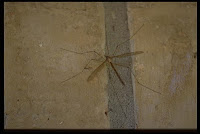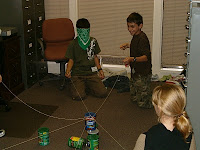Search This Blog
Questions about insects, spiders, scorpions or other creepy crawlers? Tune into this blog to learn about what's buggin' you!
Posts
Showing posts from 2010
Is There a Best Way to Remove a Tick?
- Get link
- Other Apps
Plague of Red Grasshoppers and Other Strange Things
- Get link
- Other Apps
Texas Giant Centipede-Myths of their Danger!
- Get link
- Other Apps
The Mother's Day Swarmers-Horror Story in the Summer!
- Get link
- Other Apps
Crane Flies, Crane Flies, Everywhere!
- Get link
- Other Apps
Let's Rodeo San Antonio - Bug Style!
- Get link
- Other Apps
Hmmm... Club Soda the New Fire Ant Killer???
- Get link
- Other Apps








